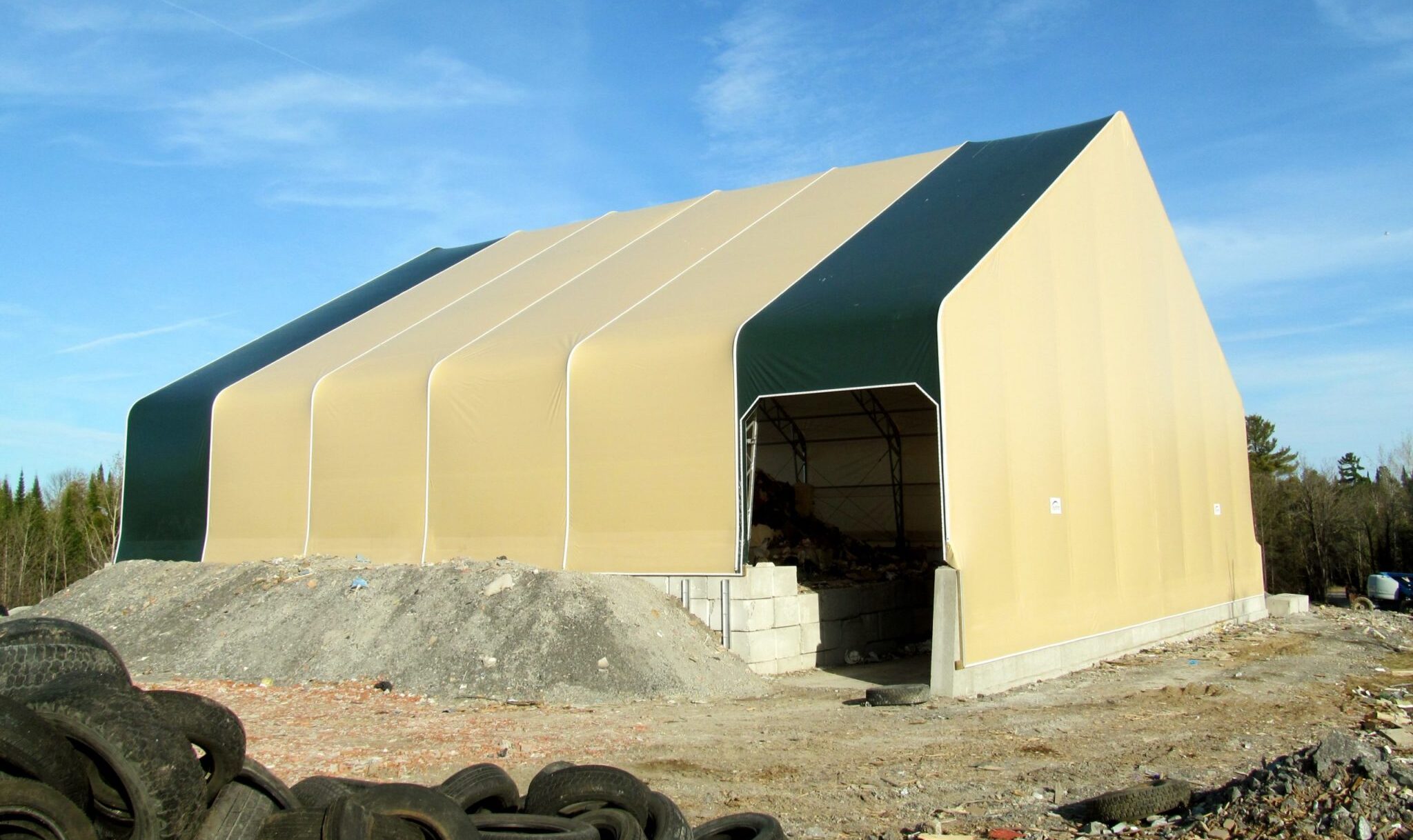How to Build a Waste Storage Facility That Provides Odor-Control
by Admin | May 10, 2019

Certain types of waste storage structure such as fabric structures have gained momentum in the waste and recycling industry as they have proven reliable and effective in odor control. The ability to control odor is a major concern in the waste storage and management industry. A waste incinerator in Detroit was recently forced to close after years of odor complaints. Continuing to upgrade the Detroit Renewable Power facility for odor control was not cost effective for the plant. Nearby homeowners, business owners, and schools were vocal about living near odors, and concerns for health and quality of life were rising. While the surrounding neighborhood now enjoys cleaner air, closing down an entire waste storage or recycling facility is not always an economical solution.
The need for waste storage structure and waste management doesn’t go away when a facility closes. Waste will simply be diverted elsewhere, sometimes several miles away. The increased transportation only adds to carbon emissions. Facility managers need to operate a safe plant for the sake of their employees, neighboring communities, and the environment. Working under budget constraints, waste storage managers must follow regulations according to their municipality.
Airtight Construction That Lasts
Well-built fabric waste storage structure are virtually airtight. Humid summer air is effectively “locked out” of a fabric structure. Inside, a less humid environment means fewer odors develop in the first place. The airtight construction system is used without penetrations around fasteners, preventing the flow of air in and out of the building. Fabric buildings are tightly sealed around doors, windows, vents, and other necessary openings. Fabric panels are precisely cut and sealed around openings without fasteners. Any odors that do develop inside the structure are “locked in” and do not penetrate the fabric cover or permeate from the fabric building.
HVAC Systems and Ventilation
A well-ventilated fabric waste storage structure is critical to the comfort and efficiency of the operation. Fabric structures are customizable to the needs and requirements of the waste management facility. Fans, exhaust vents, and make up air systems are just some of the ventilation options that can be installed, and may vary depending on the precise building application and size. HVAC systems can be added to most Calhoun fabric building frames. End-wall panels are a maintenance-free option to passively ventilate your fabric building. Mesh or aluminum panels are available in any size and several colors to match your fabric building aesthetic. Fans and exhaust vents are active ventilation options to create desired fabric building airflow. While these options require additional cost and maintenance they provide optimal airflow for certain industry applications.

